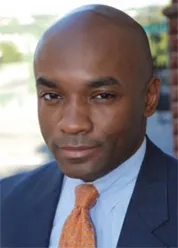Learning the Art of Contract Drafting Through the Lens of Experience
Many people who work at the Law School tell stories about landing here through happy chance—meeting an enthusiastic alum, chatting with the Dean at a Reunion event, working with a summer associate from among our students. Joan Neal is no exception.
“I met Dean Schill serendipitously, and when he heard what I’d been doing in practice, he said I was the kind of person he needed to teach some of the new skills courses he wanted to add to the curriculum,” Neal said. “So he talked me into it.”
Neal came to the Law School as a Lecturer in Law this fall with a mandate to teach contract drafting skills to upper-level students. Over time, Neal, together with Associate Dean for Corporate and Legal Affairs and Schwartz Lecturer in Law David Zarfes, will expand upon Zarfes’s existing offerings and develop a suite of additional courses designed to fulfill Dean Schill’s goal of providing a greater range of practical skills courses to our students.
Neal is extremely well suited to this sort of teaching, having spent nearly all of her twenty years as a practicing lawyer at Morrison & Foerster drafting and reviewing contracts for her clients in the telecommunications industry. She really enjoys sharing her experience with her students, and says, “I found it very challenging to step back and take all the things I just knew from practicing for twenty years and put all these skills into an organized and coherent framework that I could teach to someone else.”
The first course in her new curriculum, entitled Contract Drafting and Review, was taught this fall. Neal began with the anatomy of a contract: what components are typically in a contract and how they are organized. Using very basic contracts—nothing elaborate or field-specific—she showcased basic principles and the elements of clear drafting. Once students had begun to feel comfortable with drafting, the second half of the course moved into matters with added complexity: identifying business issues, asking clients the right questions, addressing and allocating risks, and dealing with consequences when things go wrong. Neal aimed to get her students thinking not only about legal drafting, but also about issues of business judgment and the ways that a lawyer can also add value as a business counselor, though she knows this cannot be taught overnight. While Neal certainly taught the practical side of drafting, she also drew her students into a highly analytical process—students learned how to think about contracts and how to bring their substantive knowledge to bear on a real-world situation.
The students, ten of them this fall, rose to the challenge. “I had a terrific group of students—I couldn’t have asked for a better group as a first-time novice professor,” says Neal. “They were self-selected, of course—the ones who really wanted transactional skills courses. They were really diligent and determined to wring every benefit they could out of the course and worked really hard. It made the experience a tremendous amount of fun.” The students who took the course weren’t necessarily just the transactionally minded students—a few of the students indicated that they were likely to become litigators, but that they wanted to take every legal writing course the Law School offered. Neal thinks contract drafting is an important skill for any lawyer and one that is currently missing from most first-year legal writing programs, including our own. “It’s a completely different kind of legal writing than brief writing—the goal isn’t to persuade someone of a position, but to very clearly specify what has been agreed in a way that, hopefully, will leave no uncertainty when people go back to look at it in the future.”
Neal assigned weekly written exercises because “you can talk about drafting all you want, you can read about it all you want, but until you roll up your sleeves and do it, several times, and make a bunch of mistakes, you won’t really understand it. Things that seem simple when agreed orally can turn out to be much more complex when you try to commit them to a precise provision.” Sometimes the students drafted or revised certain limited provisions, and sometimes they had longer assignments such as drafting or revising a whole contract given with certain facts. The small size of the class allowed her to give very detailed and specific feedback on these assignments every week. In class, Neal led the students through lots of exercises, sometimes doing the first few steps of a large drafting assignment together to brainstorm about how to organize or express certain ideas. Each week, Neal would also go over model answers for the weekly assignments, recognizing that there isn’t necessarily a single “right” way to do something, but there are often better ways. Late in the course, Neal had the students go back to the very first contract they wrote and revise it based on everything they’d learned during the intervening time. “It made them realize how much they really had learned in a short time,” Neal noted, “and how much more competent they felt the second time around.”
The final exam required the students to mark up a contract based on a cover memo containing their client’s instructions and concerns. Neal thinks the final was the most complex thing they were given all quarter, and that it really tested everything they’d learned.
This winter, Neal is teaching another new course, Contract Negotiation, in conjunction with Schwartz Lecturer in Law David Zarfes. The course is a quarter-long simulation of an outsourcing negotiation. Two outsourcing partners from Mayer Brown—Paul Roy and Brad Peterson—gave an engaging presentation and overview of the outsourcing industry at the first class meeting, and provided helpful template documents for use in the simulation. The students were then divided into two groups, buyers and sellers. In the initial stages, the entire buyer team worked with the entire seller team in preparing a Request for Proposal (RFP) and responsive bid. The students were then divided into two-on-two teams to negotiate a term sheet and a master agreement. They started with a template agreement, and are currently negotiating with their paired partners, documenting those negotiations, exchanging drafts, marking the drafts up, and eventually (if all goes well) signing an agreement by the end of the quarter. Neal and Zarfes are functioning as the clients for their respective teams and hold regular meetings with the students representing them to provide client feedback and instructions on both legal and business matters. Neal and Zarfes deliberately chose an outsourcing contract that set out a long-term relationship between the clients so that students wouldn’t engage in a “winner-take-all” type of negotiation. While Zarfes and Neal will look at the final contract to see how well each side incorporated its client’s concerns, they’ll also be looking at how well the pairs worked together to get a deal done.
Neal estimates that the number of associates that she worked with in her years of practice who came in armed with the knowledge about drafting that she’s providing in her classes is close to zero. True to Dean Schill’s goals in creating these practical courses, Neal believes that students who take her drafting courses will have a leg up when they enter practice. She tells her students that senior attorneys often like to teach new hires their own way of drafting, and that they have to be chameleons to some extent in their early years, writing differently for different people, but that they can still use the base principles from her courses and layer the preferences of the individual partners or clients on top of them.
Neal has one more course to teach before her first year of teaching is over: a course in Telecommunications Law and Regulation in the spring quarter. Then, together with Zarfes and Dean Schill, she’ll determine whether she’ll teach these same courses next year, or perhaps introduce new ones. When discussing preparing our students for their future careers, she is fond of quoting a book she encountered while preparing to teach,Working with Contracts: What Law School Doesn’t Teach You by Charles M. Fox. Fox says, “Learning is an accretive process: the more one knows, the easier it is to learn, because there are reference points that new information can ‘stick’ to. It’s like a crystal. Once the seed of a crystal is formed, it grows quickly by accretion.”
Neal’s skills courses are not only giving our students that crystal seed on which to base their future knowledge, but are also providing for the Law School a strong foundation for the ever-increasing skills course offerings. Once again, the forces of serendipity will reap benefits to the Law School’s students and community for a long time to come.


